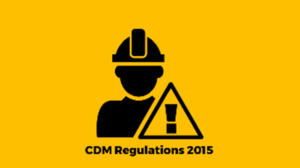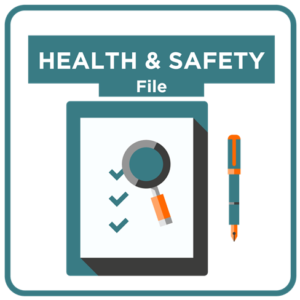
CDM stands for the Construction (Design & Management) Regulations 2015.
This latest version of the regulations applies to all construction projects in Great Britain.
There are three crucial documents required for construction projects under CDM 2015.
Pre-construction information
The Pre-Construction Information serves two main purposes:
- During its development the Pre-Construction Information can provide a focus at which health and safety considerations of the designs are brought together under the control of the Principal Designer.
- Secondly, the Pre-Construction Information plays a vital role in the tender documentation. It enables prospective principal contractors to be fully aware of the project’s health and safety and welfare requirements. This will allow prospective principal contractors to have a level playing field as far as health and safety is concerned on which to provide tender submissions.
It’s required at the very start of the project. It’s not just contractors that need this information to work safely, but designers too. The information included in the pre-construction information is needed for designers and contractors planning the work. It will tell them where hazards are on site, and what unusual risks or constraints might impact the design and the construction work.
Ultimately, the responsibility for providing this information falls on the client, it is one of the CDM 2015 client duties.
Construction Phase Plan

Sometimes referred to as the construction phase health and safety plan, or the CPP, the construction phase plan is a document required by the CDM regulations on all projects. That’s right – every construction project needs a construction phase plan.
The construction phase plan is a health and safety management document for the project. It outlines the plan for how the work will be completed safely. It will include details of the project, the type of work, the team and emergency arrangements.
The contents of the plan should be specific to the project. Because every construction project is different. Different sites. Different teams. Different work. Your construction phase plan should detail how you will manage health and safety issues on your site.
How will you deal with the hazards and risks involved? How will you manage the contractors? How will you deal with unique challenges, like site constraints or unusual design features?
The Construction Phase Plan should be reviewed and updated as necessary throughout the duration of the project and as the work progresses and develops. Some details (project team, scope of works, all risks) may not be known or finalised at the point when the Construction Phase Plan is being developed, therefore the document should be viewed as a ‘live document’ and updated as required to ensure it is up to date and reflects the construction work being carried out.
Where appointed the Principal Contractor will have overall control of a construction project and must prepare and develop the Construction Phase Plan. If there is only one contractor on site, they must prepare and develop the Construction Phase Plan.
Health and Safety File

A Health and Safety File is a repository of health and safety information that serves as a record, benefiting both clients and end users; from initial construction through use, cleaning, maintenance, alterations, refurbishment, and demolition of a building.
At the highest level, CDM Regulations place responsibility for producing a health and safety file with the principal designer and contains all relevant Health and Safety information needed to allow future construction work and future use of the building to be carried out safely.
The file must contain information about the building that is likely to be needed to ensure health and safety during any subsequent work such as maintenance, cleaning, refurbishment or demolition. When preparing the health and safety file, information on the following should be considered for inclusion:
a. A brief description of the work carried out;
b. Any hazards that have not been eliminated through the design and construction processes, and how they have been addressed (e.g. surveys or other information concerning asbestos or contaminated land);
c. Key structural principles (e.g. bracing, sources of substantial stored energy – including pre- or post-tensioned members) and safe working loads for floors and roofs;
d. Hazardous materials used (e.g. lead paints and special coatings);
e. Information regarding the removal or dismantling of installed plant and equipment (e.g. any special arrangements for lifting such equipment);
f. Health and safety information about equipment provided for cleaning or maintaining the structure;
g. The nature, location and markings of significant services, including underground cables; gas supply equipment; fire-fighting services etc.;
h. Information and as-built drawings of the building, its plant and equipment.
Some items that are not required to be included within the Health and Safety File under the CDM Regulations may be useful to the Client (e.g. operation and maintenance manuals). It is good practice to include reference to the operation and maintenance manual the File.
